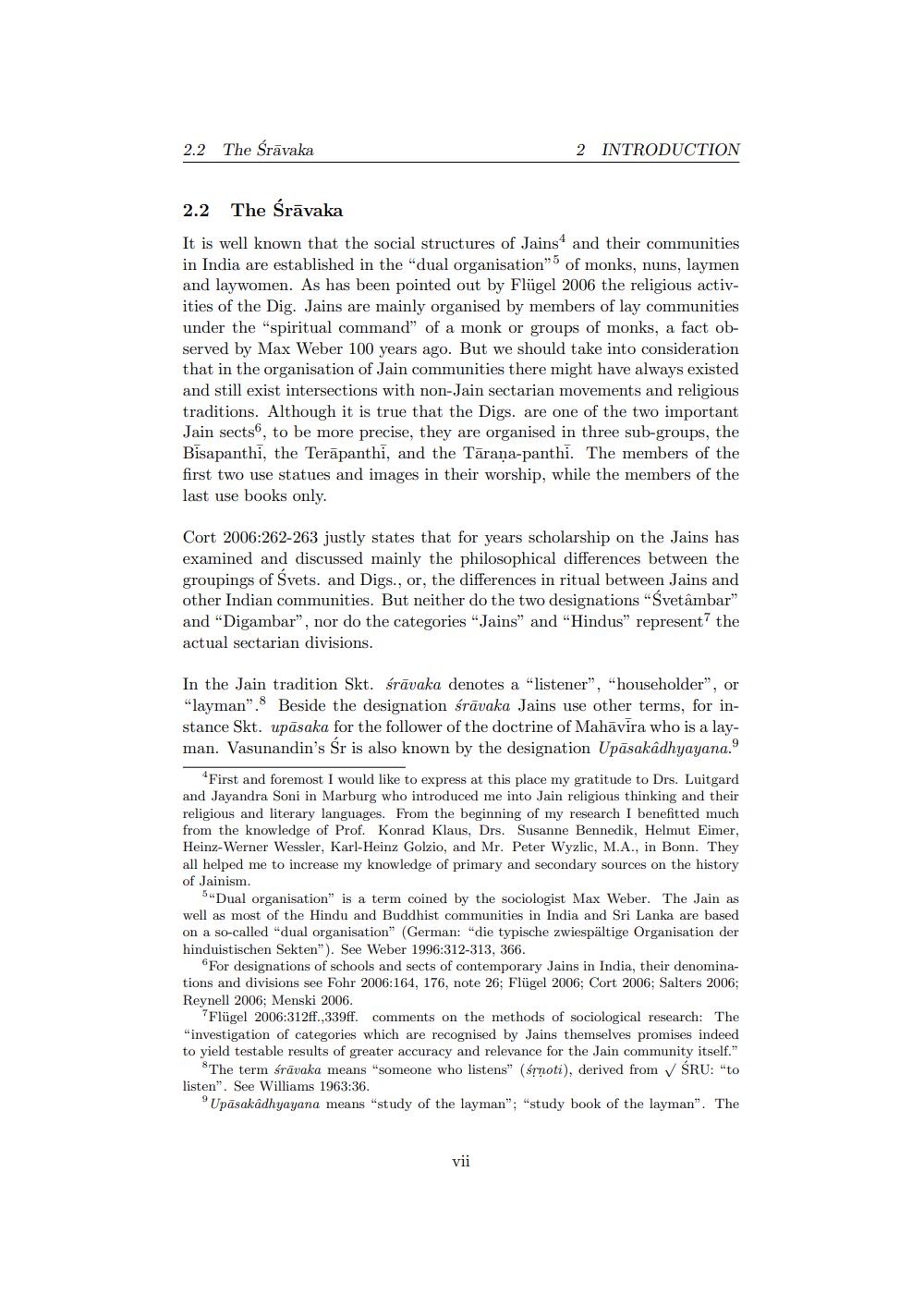Book Title: Shravakachar of Vasunandini Author(s): Signe Kirde Publisher: Signe Kirde View full book textPage 9
________________ 2.2 The Srāvaka 2 INTRODUCTION 2.2 The Śrāvaka It is well known that the social structures of Jains and their communities in India are established in the "dual organisation" of monks, nuns, laymen and laywomen. As has been pointed out by Flügel 2006 the religious activities of the Dig. Jains are mainly organised by members of lay communities under the "spiritual command" of a monk or groups of monks, a fact observed by Max Weber 100 years ago. But we should take into consideration that in the organisation of Jain communities there might have always existed and still exist intersections with non-Jain sectarian movements and religious traditions. Although it is true that the Digs. are one of the two important Jain sects, to be more precise, they are organised in three sub-groups, the Bisapanthi, the Terapanthi, and the Tarana-panthi. The members of the first two use statues and images in their worship, while the members of the last use books only. Cort 2006:262-263 justly states that for years scholarship on the Jains has examined and discussed mainly the philosophical differences between the groupings of Svets, and Digs., or, the differences in ritual between Jains and other Indian communities. But neither do the two designations "Svetâmbar" and "Digambar”, nor do the categories "Jains" and "Hindus" represent the actual sectarian divisions. In the Jain tradition Skt. śrāvaka denotes a "listener", "householder”, or "layman". Beside the designation śrāvaka Jains use other terms, for instance Skt. upāsaka for the follower of the doctrine of Mahāvira who is a layman. Vasunandin's Sr is also known by the designation Upāsakadhyayana." *First and foremost I would like to express at this place my gratitude to Drs. Luitgard and Jayandra Soni in Marburg who introduced me into Jain religious thinking and their religious and literary languages. From the beginning of my research I benefitted much from the knowledge of Prof. Konrad Klaus, Drs. Susanne Bennedik, Helmut Eimer, Heinz-Werner Wessler, Karl-Heinz Golzio, and Mr. Peter Wyzlic, M.A., in Bonn. They all helped me to increase my knowledge of primary and secondary sources on the history of Jainism. 5 Dual organisation" is a term coined by the sociologist Max Weber. The Jain as well as most of the Hindu and Buddhist communities in India and Sri Lanka are based on a so-called "dual organisation" (German: "die typische zwiespältige Organisation der hinduistischen Sekten"). See Weber 1996:312-313, 366. For designations of schools and sects of contemporary Jains in India, their denominations and divisions see Fohr 2006:164, 176, note 26; Flügel 2006; Cort 2006; Salters 2006; Reynell 2006; Menski 2006. Flügel 2006:312ff.,339ff. comments on the methods of sociological research: The "investigation of categories which are recognised by Jains themselves promises indeed to yield testable results of greater accuracy and relevance for the Jain community itself." & The term śrāvaka means "someone who listens" (śrnoti), derived from v ŚRU: "to listen". See Williams 1963:36. Upāsakadhyayana means "study of the layman"; "study book of the layman". ThePage Navigation
1 ... 7 8 9 10 11 12 13 14 15 16 17 18 19 20 21 22 23 24 25 26 27 28 29 30 31 32 33 34 35 36 37 38 39 40 41 42 43 44 45 46 47 48 49 50 51 52 53 54 55 56 57 58 59 60 61 62 63 64 65 66 67 68 69 70 71 72 73 74 75 76 77 78 79 80 81 82 83 84 85 86 87 88 89 90 91 92 ... 187
